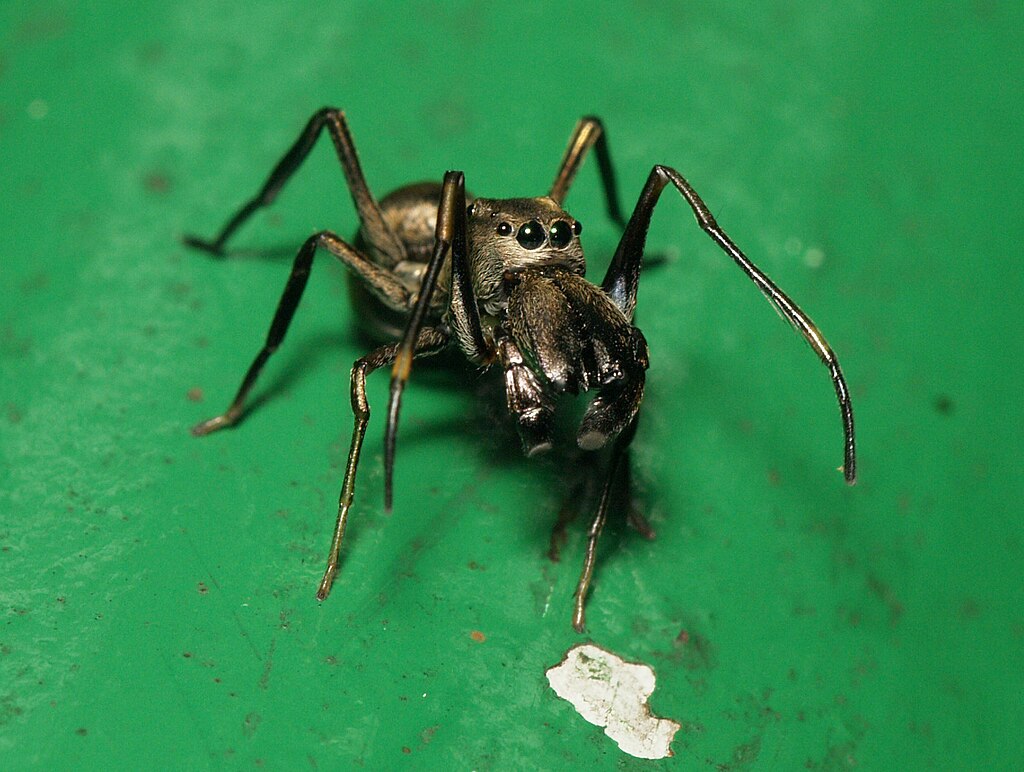
Researchers knew that jumping spider (Toxeus magnus) young didn’t leave the nest for twenty-one days and adults were not observed to bring back food for them. So they checked it out:
They looked more closely and noticed that the mother was secreting a liquid from its upper abdomen onto the surface of the nest, which the spiderlings ate. After a week, the spiderlings sucked the milk directly from the mother. Even though they were able to leave the nest and feed themselves after 20 days, they continued suckling the milk for another 18 days. If these were humans, they’d be featured on a cable TV program. Once the spiderlings matured, the mother attacked the males that returned while females were still allowed in, perhaps to prevent inbreeding, according to the study published today in Science.Ryan F. Mandelbaum, “Spider Mothers Produce Milk for Their Young, Incredible New Study Shows” at GIZMODO
Also:
Abstract: Abstract
Lactation is a mammalian attribute, and the few known nonmammal examples have distinctly different modalities. We document here milk provisioning in a jumping spider, which compares functionally and behaviorally to lactation in mammals. The spiderlings ingest nutritious milk droplets secreted from the mother’s epigastric furrow until the subadult stage. Milk is indispensable for offspring survival in the early stages and complements their foraging in later stages. Maternal care, as for some long-lived vertebrates, continues after the offspring reach maturity. Furthermore, a female-biased adult sex ratio is acquired only when the mother is present. These findings demonstrate that mammal-like milk provisioning and parental care for sexually mature offspring have also evolved in invertebrates, encouraging a reevaluation of their occurrence across the animal kingdom, especially in invertebrates. (paywall) More. Zhanqi Chen1, Richard T. Corlett1, Xiaoguo Jiao2, Sheng-Jie Liu3, Tristan Charles-Dominique1, Shichang Zhang2, Huan Li1, Ren Lai4, Chengbo Long4, Rui-Chang Quan1,* Science 30 Nov 2018: Vol. 362, Issue 6418, pp. 1052-1055 DOI: 10.1126/science.aat3692
Follow UD News at Twitter!
Talk about convergent evolution. Some of the behavior reminds one of a mammalian burrow:
Twenty days after hatching, the spiderlings make their first forays out of the nest, and start hunting for small flies. But they still return to their mother to drink her milk, until finally weaning at 40 days of age. Even then, most of them stay in the nest for many weeks more, while the mother continues to care for them. She’ll throw out their molted exoskeletons, repair the nest, and evict parasites such as mites. Ed Yong, “There’s a Spider That Makes Milk” at The Atlantic
See also: “Live action” captured in a spider’s web from 100 million years ago
Researchers teach a spider to jump on demand
and
Spiders evolving disguises separately, in parallel, are another problem for Darwinism